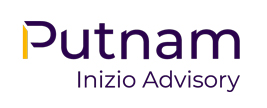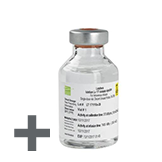Transforming oncology: The rise of targeted radiopharmaceuticals
The advent of targeted radiopharmaceuticals is revolutionising the field of oncology. These innovative therapies integrate systemically delivered radiotherapy into diagnostic and personalised medicine strategies, offering a new frontier in cancer treatment. Unlike traditional therapies, targeted radiopharmaceuticals deliver lethal doses of radiation directly to malignant cells, minimising damage to healthy tissues. This precise targeting is achieved through radioisotope payloads linked to molecules or antibodies that hone in on cancer cells.
Significant progress in this field is evident with the FDA and EMA approval of two groundbreaking treatments: Lutathera for gastroenteropancreatic neuroendocrine tumours (GEP-NETs) and Pluvicto for metastatic castration-resistant prostate cancer (mCRPC). These therapies, now part of Novartis’s portfolio, generated $1.8 billion in revenue in 2023, with Pluvicto alone projected to exceed $3 billion globally. This financial success underscores radioligand therapeutics' immense commercial and therapeutic potential, signalling their emergence as a pillar of modern oncology.
The growing pipeline and strategic partnerships
The expanding pipeline of targeted radiopharmaceuticals has sparked a flurry of business development and licensing activities among major pharmaceutical companies. Over 30 innovators have advanced over 40 assets into clinical development, attracting significant interest from leading global pharmaceutical players. These companies are eager to enhance their portfolios with these innovative agents or to strengthen their in-house radiopharmaceutical capabilities through high-potential assets. Over 20 significant partnering deals have been reported in the past two years alone.
Notable partnerships and acquisitions include:
- Novartis: In addition to Lutathera and Pluvicto, Novartis has licensed an FAP targeting construct from 3B Pharmaceuticals and partnered with Bicycle Therapeutics to develop protein ligands for oncology.
- Bayer: Bayer has expanded its radiopharmaceutical portfolio by acquiring Noria and PSMA Therapeutics, gaining access to PSMA (prostate) targeting agents. They have also entered a strategic collaboration with Bicycle Therapeutics to develop additional agents using proprietary, synthetic peptide carriers.
- Eli Lilly: The acquisition of Point BioPharma has provided Eli Lilly access to pivotal programmes targeting PSMA (mCRPC) and SSTR (GEP-NETs), as well as an early-phase programme targeting FAPα (PNT2004).
- Bristol Myers Squibb (BMS): BMS's acquisition of RayzeBio for approximately $4.1 billion includes the late-stage asset RYZ101, an actinium-based RLT for GEP-NETs, and RayzeBio's manufacturing facility.
- Telix Pharmaceuticals: Telix has proposed acquiring QSAM Biosciences and its lead asset, CycloSam (Samarium-153-DOTMP), a radiopharmaceutical for bone cancer or metastasis.
Key development and innovation trends
Several key trends are driving the adoption and clinical value of radiopharmaceuticals in oncology. These trends include expanding indications to address unmet needs in hard-to-treat tumours, improving adverse event profiles, enhancing efficacy, and integrating into combination therapies.
Expansion to hard-to-treat tumours
With proof-of-concept established in GEP-NETs and mCRPC, radiopharmaceutical development has expanded to target over 15 malignancies across solid and haematologic tumours. Innovations are focusing on novel targets not yet fully explored by other treatment modalities, such as hexokinase 2 (HK2), neurotensin receptor 1 (NTSR1), and gastrin-releasing peptide receptor 1 (GRPR1).
Improving adverse event profiles
Next-generation targeted radiotherapeutics aim to enhance radioisotope targeting to improve efficacy and reduce toxicity. Innovations include:
- Radio DARPin constructs: These genetically engineered antibody mimetic proteins offer high specificity and affinity for target proteins, potentially reducing uptake by healthy tissues and organs, such as the kidneys.
- Tumour microenvironment (TME) exploitation: Constructs that exploit unique features of the TME, such as lower pH, greater hypoxia, or specific enzymatic activity, to activate or enhance ligand/small molecule or monoclonal antibody (mAb)-mediated binding.
- Single domain antibodies and nanobodies: These exhibit shorter blood half-lives, enhanced tumour uptake, and superior binding affinity and specificity for target biomarkers.
Enhancing efficacy
Harnessing the greater lethality of alpha-emitting radioisotope payloads represents a significant advancement in radiopharmaceuticals. Alpha emitters deliver high-energy decay with limited tissue penetration, providing potent radiation while minimising exposure to healthy tissues. The emergence of alpha-emitting radioisotopes, such as Actinium-225, Astatine-211, and Lead-212, may reduce reliance on beta emitters, though supply issues persist. Additionally, alternative beta emitters like Copper-67, Iodine-131, and Terbium-161 can diversify radioisotope sources and mitigate supply-side pressures.
Combination therapies
The potential for synergistic effects drives the transition from monotherapy to combination therapy. Rationally designed combination therapies include:
- DNA repair inhibitors: Such as PARP inhibitors, which enhance the efficacy of radiotherapy.
- Immune checkpoint inhibitors: Anti-PD-(L)1 agents that leverage radiotherapy-induced neo-antigens to boost immune response.
- Chemotherapeutics: Established radiosensitisers in chemoradiation protocols that enhance the effects of radiotherapy.
Addressing radiopharmaceutical-specific challenges
Developing a differentiated radiotherapeutic portfolio is crucial, but addressing specific challenges related to radiopharmaceuticals is equally important. These challenges include:
Supply chain
Establishing a robust supply chain for medical-grade isotopes is critical. The radio-decay characteristics of these substrates and the anticipated increase in demand underscore the importance of reliable sourcing.
Manufacturing and distribution
Optimising manufacturing and distribution strategies is essential. These strategies might involve centralised, localised (third-party radiopharmacies), or mixed approaches to address geographical and territorial challenges.
Prescriber network
Expanding and realigning field medical and sales teams to engage, educate, and support multidisciplinary care teams, including radiation oncologists and treatment centres capable of administering radiopharmaceuticals, is necessary.
In summary
The rapid advancement of targeted radiopharmaceuticals signifies a transformative shift in oncology, offering new hope for patients with difficult-to-treat cancers. By delivering precise radiation directly to malignant cells while sparing healthy tissue, these therapies are poised to revolutionise cancer treatment. The success of pioneering treatments like Lutathera and Pluvicto, coupled with the burgeoning pipeline of over 40 clinical-stage assets, underscores the vast commercial and therapeutic potential of radioligand therapies.
Strategic acquisitions and partnerships among major pharmaceutical companies, such as those by Novartis, Bayer, Eli Lilly, and Bristol Myers Squibb, highlight the intense interest and investment in this field. These collaborations are not only expanding the range of available treatments but also driving innovation in targeting mechanisms and combination therapies. By addressing challenges unique to radiopharmaceuticals, including supply chain logistics, manufacturing, distribution, and prescriber education, the industry is paving the way for more widespread adoption and integration into standard oncology care.
Looking forward, the integration of next-generation targeted radiotherapeutics into combination regimens promises to enhance efficacy and expand their use across various stages of cancer treatment. Innovations such as alpha-emitting radioisotopes and novel targeting constructs are expected to further improve clinical outcomes, reduce adverse events, and provide new avenues for treating a broader range of malignancies.
As the clinical evidence continues to validate the efficacy and safety of these therapies, targeted radiopharmaceuticals are poised to become a cornerstone of modern oncology. The ongoing development and strategic investments in this field reflect a commitment to improving patient outcomes and addressing unmet needs in cancer care. The future of oncology is bright, with targeted radiopharmaceuticals leading the charge toward more personalised, more effective, and less invasive cancer treatments.
The emerging era of targeted radiopharmaceuticals represents a paradigm shift in the treatment of cancer. Through continued innovation, strategic partnerships, and a focus on addressing key challenges, these therapies have the potential to become a central pillar in the fight against cancer.
About Putnam
Putnam, an Inizio Advisory company, is a leading scientific and strategic consulting partner that helps the global life science community make confident decisions, build value, and bring life-changing innovations to clinicians and patients. For more than 30 years, our rigorous, bespoke approach and globally diverse team have delivered unrivalled depth across therapeutic areas, business functions, geographic markets, healthcare sectors, and technology platforms to maximise the human impact and commercial success of client innovations.
About the author
Vikram Gosain is a partner in Putnam’s London office and is focused on expanding Putnam’s commercial strategy practice in the UK and Europe.
He brings over 20 years of consulting experience having worked with multiple clients globally to make more informed decisions related to asset, disease, and portfolio strategy. Gosain’s core areas of focus include commercial opportunity assessments, early pipeline strategy, BD&L (Business Development & Licensing) due diligence and portfolio strategy. He has worked across several therapeutic areas specialising in oncology, immunology, rare diseases, cardiovascular, metabolic, and renal diseases. His previous roles include corporate development strategy and banking.
Gosain earned his Bachelor’s and MBA from the Lubin School of Business at Pace University and was inducted to the Beta Gamma Sigma honour society.
Research contributions from Andris Ortmanis, senior director, and Anita Zutshi, associate director.
Supercharge your pharma insights: Sign up to pharmaphorum's newsletter for daily updates, weekly roundups, and in-depth analysis across all industry sectors.
Want to go deeper?
Continue your journey with these related reads from across pharmaphorum
Click on either of the images below for more articles from this edition of Deep Dive: Oncology 2024

















